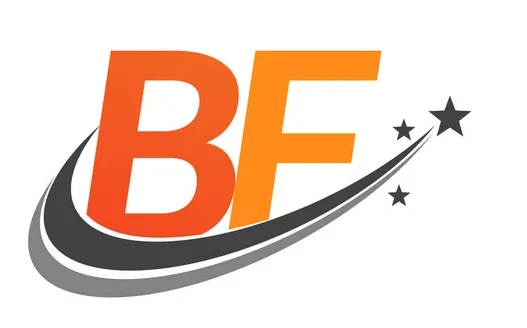
Introduction
In today’s interconnected world, various terms, platforms, and concepts emerge with unique names, sparking curiosity and sometimes leaving people wondering what they truly mean. One such term that has piqued interest recently is “Tuambia.” But what is Tuam bia? Whether you’ve come across it on social media, in tech discussions, or through general conversation, this article aims to unravel the meaning, possible uses, and significance of the term “Tuam bia.”
What is Tuambia?
At its core, “Tuambia” could potentially be derived from a Swahili word meaning “tell us” or “inform us.” In Swahili, “tuambie” (note the different spelling) means “tell us” or “inform us” in a conversational context. This suggests that the term could be tied to something related to communication, sharing, or information dissemination.
However, without further context, Tuambia may not simply be a literal translation of this phrase. It could also refer to a platform, application, or service that focuses on storytelling, sharing information, or fostering communication between users. Let’s explore some possible interpretations and uses of the term.
Possible Applications of Tuambia
1. A Communication Platform
Given that the Swahili origin of the term translates to “tell us,” Tuambia could very well be the name of a platform aimed at facilitating communication. Whether it’s a social media platform, a messaging app, or a community-driven content platform, Tuam bia could focus on enabling users to share stories, ideas, and experiences with each other.
In a world where platforms like Facebook, Twitter, and Instagram dominate, a platform with a unique regional or cultural focus could stand out. If Tuambia is such a platform, it may serve a niche audience with features that encourage local content, storytelling, or even knowledge sharing.
2. A Knowledge-Sharing Hub
Another possible interpretation of Tuambia could be as a knowledge-sharing website or educational tool. Many websites today are designed to spread information, whether it’s in the form of written articles, tutorials, or video content. Tuam bia might be a place where experts, creators, or enthusiasts share information with others, answering questions or providing insights on a variety of topics.
This interpretation aligns with the meaning of the word: a platform where people “tell us” more, educate us, and inform us on specific topics of interest.
3. A Customer Feedback System
In another context, Tuambia could represent a feedback collection platform for businesses. Many companies now use digital tools to gather insights and feedback from their customers, seeking opinions on products, services, or experiences. If Tuam bia is a service like this, it might specialize in creating surveys, polls, or feedback forms where users tell businesses their opinions, helping them improve and tailor their offerings.
4. A Storytelling App
Given the meaning of the word “tell us,” Tuambia could also be a creative app dedicated to storytelling. Whether in the form of short stories, articles, or blogs, users could use the platform to express themselves through narrative. This could be a platform where writers or casual storytellers come to share their experiences, fiction, or even poetry.
5. A Local or Cultural Hub
In a more localized context, Tuambia could serve as a community-driven website or app that focuses on fostering conversations within a specific geographical or cultural group. It might aim to be a place where people can talk about relevant issues affecting their communities, share local news, or even participate in discussions about traditions and cultural practices.
Key Features Tuambia Could Offer
If Tuambia is indeed a platform for communication or knowledge sharing, it would likely have several important features designed to facilitate user interaction and information exchange. These features might include:
1. User-Friendly Interface
An intuitive, user-friendly interface would be essential for Tuambia, especially if it caters to a broad audience. Users should be able to easily navigate through posts, stories, or feedback forms and engage with content in meaningful ways.
2. Multiple Languages Support
If Tuambia is inspired by a Swahili phrase, it could be beneficial for the platform to offer multilingual support. Given that Swahili is widely spoken in East Africa, the platform could cater to both local and global audiences by providing content and user interfaces in Swahili, English, and other regional languages.
3. Storytelling or Blogging Tools
For users to easily share their stories, experiences, or knowledge, Tuambia would need to offer robust content creation tools. Whether it’s a simple text editor for blogging or more advanced features like image and video embedding, users should have the tools they need to express themselves effectively.
4. Social Interaction Features
For a platform aimed at “telling us” or sharing information, social interaction features like comments, likes, and shares would be crucial. These tools would allow users to engage with each other’s content, start discussions, and build communities around common interests.
5. Feedback and Survey Options
If Tuambia is a feedback-oriented platform, it might also provide tools for creating surveys, polls, and questionnaires. Businesses or individuals could use these tools to gather opinions and insights from their target audiences, helping them make informed decisions.
Why Tuambia Could Matter
1. Filling a Gap in the Market
If Tuambia is a platform designed for a specific audience, whether it’s a regional or cultural group, it could fill an important gap in the market. Many global platforms don’t cater specifically to smaller, niche audiences, leaving room for new services like Tuambia to provide a unique space for communication and storytelling.
2. Encouraging Local Content Creation
Platforms like Tuambia that are inspired by local languages or cultures could encourage content creation that is culturally relevant and locally impactful. This could help in promoting diversity in online content, giving voices to those who may not have a platform on mainstream sites.
3. Providing Educational Value
If Tuambia focuses on knowledge sharing, it could serve as a valuable resource for people seeking information on a wide variety of topics. Whether it’s through expert articles, tutorials, or community discussions, Tuambia could be a go-to place for learning.
Conclusion
While the exact nature of Tuambia may still be unclear depending on the context in which the term is used, it is evident that it holds potential as a communication, feedback, or knowledge-sharing platform. Derived from the Swahili word for “tell us,” Tuambia evokes the idea of storytelling, information exchange, and community engagement.
Whether it’s a platform for local content, a feedback tool for businesses, or a knowledge-sharing hub, Tuambia could serve an important role in connecting people, enabling them to share their stories, opinions, and insights.
FAQs About Tuambia
1. What does “Tuambia” mean?
“Tuambia” may be derived from the Swahili phrase “tuambie,” which means “tell us” or “inform us.” It could refer to a platform focused on communication, feedback, or knowledge sharing.
2. Is Tuambia a website or an app?
It’s not yet clear if Tuambia is a website, app, or concept. It could potentially be a platform or tool for storytelling, feedback collection, or community discussions.
3. How can I use Tuambia?
If Tuambia is a platform, it could be used for creating and sharing stories, providing feedback to businesses, or participating in community-driven discussions. The specific uses would depend on its final form.
4. Is Tuambia available in multiple languages?
If inspired by its Swahili roots, Tuambia may offer multilingual support, including Swahili, English, and other languages relevant to its user base.
5. How does Tuambia compare to other platforms?
Tuambia’s focus on local content, storytelling, or feedback collection could set it apart from more generalized platforms like Facebook or Instagram, offering a more niche and culturally relevant experience.


